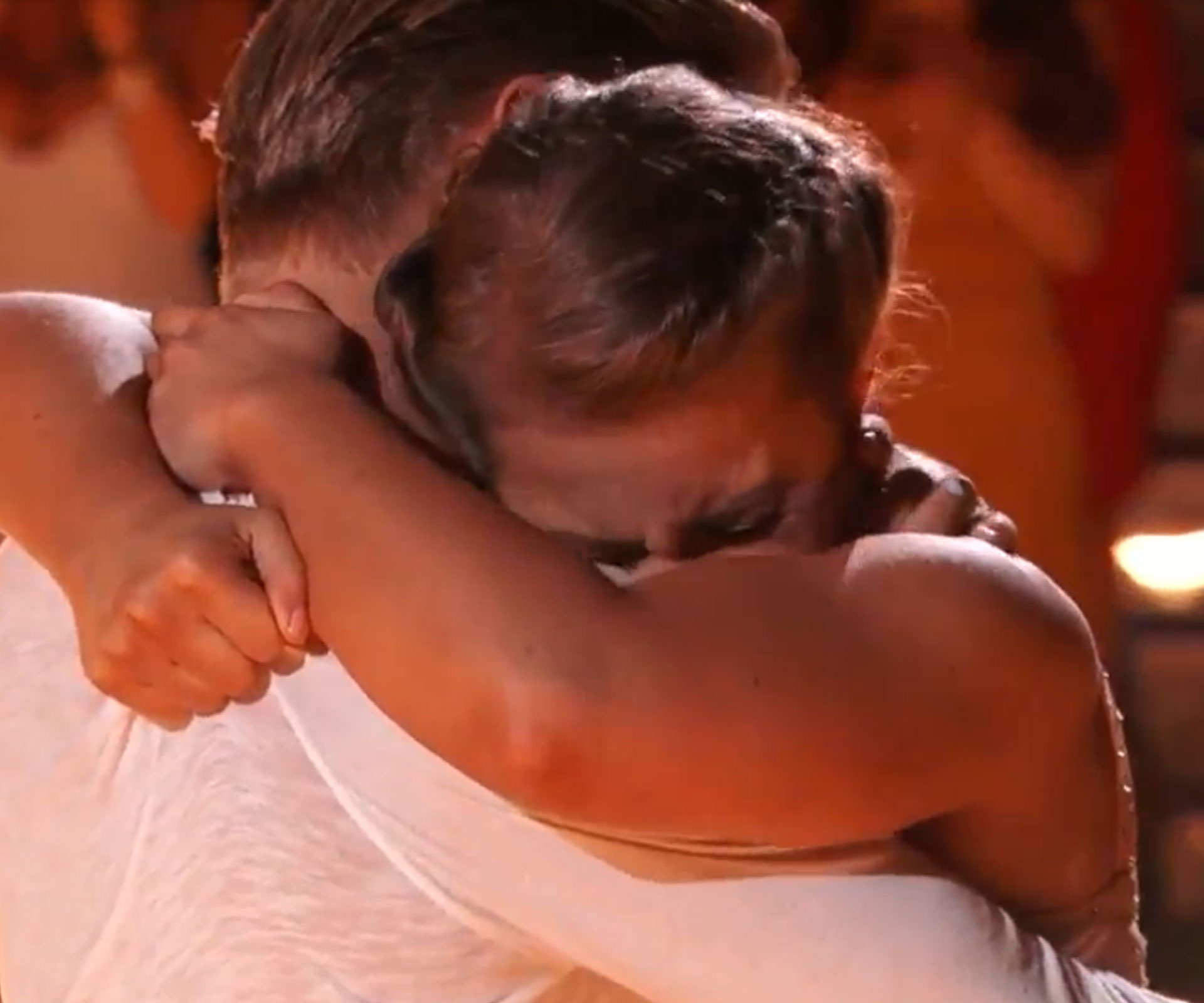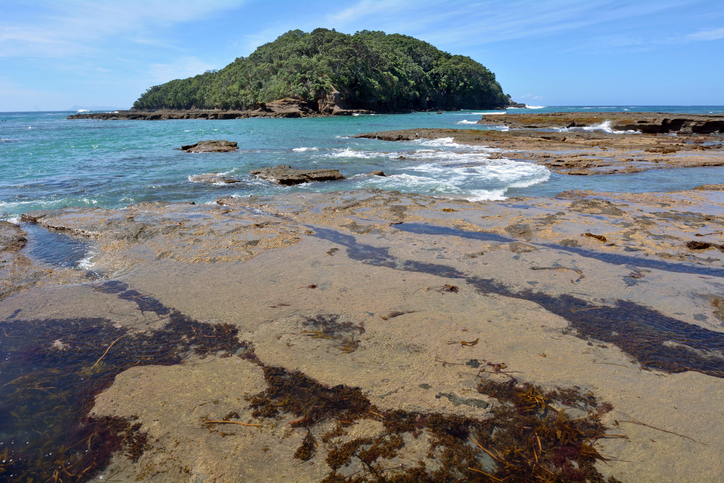Steve and Riley Hathaway are not your average Kiwi father and teenage daughter. While many dads might struggle to find common ground with their 16-year-old girl, this duo share a passion that has taken them round the world together filming ocean wildlife and sharing mind-blowing adventures.
The duo from Snells Beach, Auckland launched Young Ocean Explorers four years ago – a marine education entity that teaches kids about the ocean and marine life in a fun and entertaining way. So far they’ve created an online interactive documentary, which they teamed up with Greenstone TV to produce, two TV series which screened on kids’ show What Now and a book and DVD, the latter two of which they’ve given away to every school in New Zealand and the Cook Islands. Teachers are using their content in their classrooms and raving about it.
Riley, who is in the midst of sitting her NCEA exams and won the conservation award at her high school prizegiving last week, has even done her first Ted Talk at age 14 to an audience of 2500 adults.
In the making of their content they’ve got up close and personal with Orca, Bryde’s whales, Galapagos sharks and Manta rays. They’ve filmed extensively in New Zealand waters but also at Great Barrier Reef in Australia and the Pacific Islands.
On November 10 they’re heading to California where they hope to get footage of Californian sealions and the Californian state fish, the Garibaldi. There, they will also be holding talks with potential partners to grow their story-telling venture even further. We’d say watch this space.

Steve and Riley Hathaway – the father-daughter duo from New Zealand who are changing the way kids view the ocean and its inhabitants.
Photographs by Richard Robinson
The pair say they definitely “have their moments” like any father and daughter, but they’re the dream team when it comes to creating engaging marine wildlife content.
If they remind you of another famous conservationist father and daughter, we thought of Australia’s late Steve Irwin and daughter Bindi too. But Steve and Riley’s focus is the ocean and they present their stories through the eyes of Riley to ensure it’s engaging to kids.
So how does a dad with a background in construction and his adolescent daughter end up doing something like this? Riley was 12 when they launched Young Ocean Explorers and while Steve has always been a keen spear fisherman, he’s no marine biologist.
Steve says it was getting involved with a locally-made regional TV show many years ago, on which he was the diving presenter, that inspired him. He even convinced wife Jo that it would be a good idea for him to invest in a “really flash boat and camera” so he could start filming “Steve’s Spearfishing Adventures” with his mates.
The adventure show didn’t pan out but in the process Steve became a great underwater cameraman, picking up natural history filming work for scientist Dr Ingrid Visser, who specialises in researching Orca. Some of Steve’s footage has appeared on international documentaries, including BBC’s upcoming series Blue Planet 2 and Blackfish.

But it was a school project about the ocean that Riley did when she was 12 that really got things off the ground.
Riley chose to create a video about turtles eating plastic. “So I asked Dad if I could interview his friend Dan [Godoy], a New Zealand turtle expert. We put together this video with some turtle footage and questions that kids would want to know and then I showed it to my little brother’s class.
“It was like seven minutes long and was so roughly put together but the kids responded so well and at the end I put them all in a circle and asked them to each tell me something they’d learned from the video. They all came back with different answers and it was incredible seeing what an impact it had on the class. So that’s when Dad had the idea.”

Riley out in the field.
Steve says he “chewed it over” for a couple of weeks before talking to Riley.
“But when I asked her if she was interested in doing more stories and interviewing more scientists her eyes lit up. I said ‘what would you want to do?’ and instantly she fired back ‘I’d do Orca, stingrays, Maui’s dolphins,’ and I thought ‘oh my goodness’. All this was sitting underneath in her all this time and I had no idea.”
A next-to-nothing budget and tight time schedules has meant the pair have often had to be creative and flexible, but Steve says they’ve also had an incredible amount of good luck.
They had a Manta ray – the largest of the stingray family – sidle up to their boat while on their way to film regular rays, and another time they were approached by two Bryde’s whales on an unsuccessful trip looking for sharks.
Speaking of which, Riley has a great shark story, which you can see in the video above, that would make most parents feel pretty uncomfortable:
“We were up at the Kermedec Islands, we had literally just got there on the boat. We’d spent three days without seeing land and I was so seasick and over being on a boat and Dad said ‘let’s go for a swim’. I kind of just wanted to relax but I hopped in the water and there were 12 or more sharks around me. I will never forget that moment.”
She says she was a “little bit scared. But after a while I realised that sharks are just big fish that eat small fish.”
“Most sharks,” Steve corrects her.
“These sharks,” Riley enthuses. “It was incredible. Towards the end of that dive I was swimming down beside them and looking into their eyes.”

“Some people,” Steve says, “would think I don’t love my daughter, throwing her in the water with 12 sharks. For sure you’re dealing with wild animals… But I wouldn’t put my daughter in a scenario which is beyond what she can handle or which is dangerous.”
The pair draw their inspiration from some of our greatest conservationists. “Jacques Cousteau [a French marine conservationist and ocean explorer best known for his TV series and documentaries including The Silent World] changed the way the world thought about the ocean; he opened up this blue realm to a whole new generation of people.
“Ruud Kleinpaste, The Bug Man, is somebody I find inspirational,” says Steve.
“While we’d never claim to be a Steve and Bindi and we’d never claim to be a Cousteau we want to do a similar thing with this generation of kids and bring the marine world to life.
“We want to engage them so that they want to hear stories about the ocean and they want to check it out for themselves and look after it. It’s about finding fun story angles that will get kids’ interest up. There are so many fascinating, beautiful animals, yet we still probably know less about the ocean than we do about the moon.”

Steve and Riley’s Young Ocean Explorers book
Steve can’t stop talking about marine life – here are some of the fascinating facts he shared with us
Dawn choirs
In the shallows, the marine life “sing” in the evenings. Steve refers to them as “the dawn choruses of the animals. Did you know it’s like a choir under there in the evenings?”
In the neighbourhood
The different species of marine animals know each other well. Says Steve, “We look at them as isolated animals and assume a snapper wouldn’t know the kahawai and it wouldn’t know the other animals on the reef but they do know each other intimately. They understand each other’s noises; they understand each other’s behaviour.”
Filtered water
Pipis, cockles and mussels can filter a huge amount of water every day, and are integral to helping keep our harbours clean. Green-lipped mussels alone can filter 350 litres of water per day. There used to be so many mussels in the inner Hauraki gulf that it would get filtered once a day. But because of commercial fishing, the decline of surrounding wetlands and development on land causing sedimentation, it now takes two years for the mussels left in the Hauraki Gulf to filter the same amount of water.
A sea cucumber breathes through its bottom.

